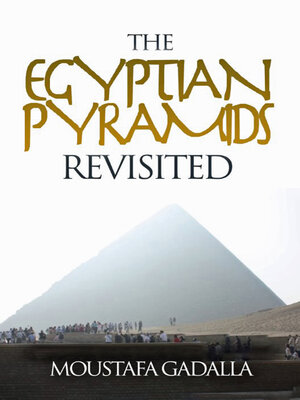
Sign up to save your library
With an OverDrive account, you can save your favorite libraries for at-a-glance information about availability. Find out more about OverDrive accounts.
Find this title in Libby, the library reading app by OverDrive.



Search for a digital library with this title
Title found at these libraries:
| Library Name | Distance |
|---|---|
| Loading... |
SHORT DESCRIPTION
The new expanded edition provides complete information about the pyramids of Ancient Egypt in the Giza Plateau. It contains the locations and dimensions of interiors and exteriors of these pyramids; the history and builders of the pyramids; theories of construction; theories on their purpose and function; the sacred geometry that was incorporated into the design of the pyramids; and much, much more. It also includes details of the interiors and exteriors of the Saqqara's Zoser Stepped "Pyramid" as well as the three Snefru Pyramids that were built prior to the Giza Pyramids. It also discusses the "Pyramid Texts" and the works of the great pharaohs who followed the pharaohs of the Pyramid Age.
LONG DESCRIPTION
From a distance, what we have learned about the pyramids may appear factual; but once we examine this information closer, it proves to be otherwise. This book is intended to undo many false perceptions about the Ancient Egyptians' pyramids.
This book provides a fresh look at the interiors and exteriors of Egypt's masonry pyramids, theories of construction, their purpose and function, and the sacred geometry of their design.
This book is a revised and enhanced third edition of the second edition (entitled Pyramid Handbook) which was an update of the first edition, Pyramid Illusions: A Journey to the Truth, by Moustafa Gadalla.
This new third edition expands and adds to previous texts of the prior edition. We also added a large number of photographs that compliment the text materials throughout the book.
This expanded edition of the book consists of seven fully illustrated parts, with a total of 18 chapters.
Part I: Overview consists of two chapters—1 and 2, as follows:
Chapter 1: The Background provides a short opening statement about the common "theories" and the counterpoints, based on actual facts.
Chapter 2: The Genuine Masonry Pyramids provides a list of the Egyptian pyramids that were built during the Fourth dynasty about 4,500 years ago.
Part II: Pyramids versus Tombs consists of two chapters—3 and 4—as follows:
Chapter 3: Stepped "Pyramid" of Zoser covers details of its super-structure and its underground chambers.
Chapter 4: The Fictional Tombs covers the details of a typical Ancient Egyptian tomb and how totally different it is from the interiors of the Egyptian masonry pyramids of the Fourth Dynasty.
Part III: Pyramids—Functions & Forms consists of two chapters—5 and 6—as follows:
Chapter 5: The Pyramid Complex shows how the Egyptian pyramid was a component of a complex that was connected to other temples; and the differences in functions and forms between a pyramid and a temple; as well as the energetic proportioning of such structures.
Chapter 6: Pyramid Power covers the form variations of the Egyptian masonry pyramids; and how such forms attract, maintain and channel cosmic energies.
Part IV: Pyramid Construction Techniques consists of two chapters—7 and 8—as follows:
Chapter 7: The Flawed "Common Theory"covers the details of the Common 'Theory"; the unidentified "source" of quarried blocks; the impossibilities of cutting and shaping the pyramid blocks; the impossible logistics of the fabricated ramps theory; the conveniently-ignored three immense Pyramids of Snefru; and a summation refuting the western-made "Common Theory".
Chapter 8: The Material Facts covers Herodotus' accounts of pyramid construction; Egyptian molding techniques; the differences between synthetic and natural blocks; the various types of synthetic concrete blocks; the unique qualities of...







